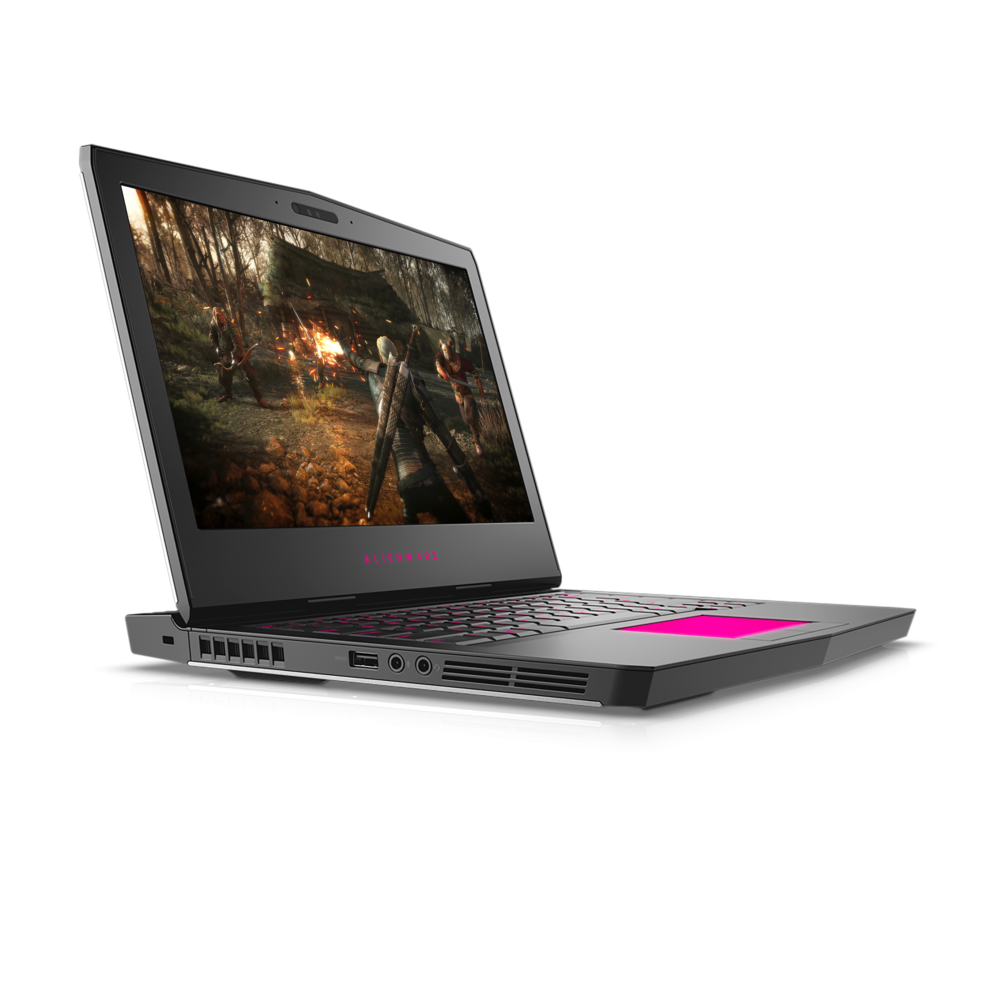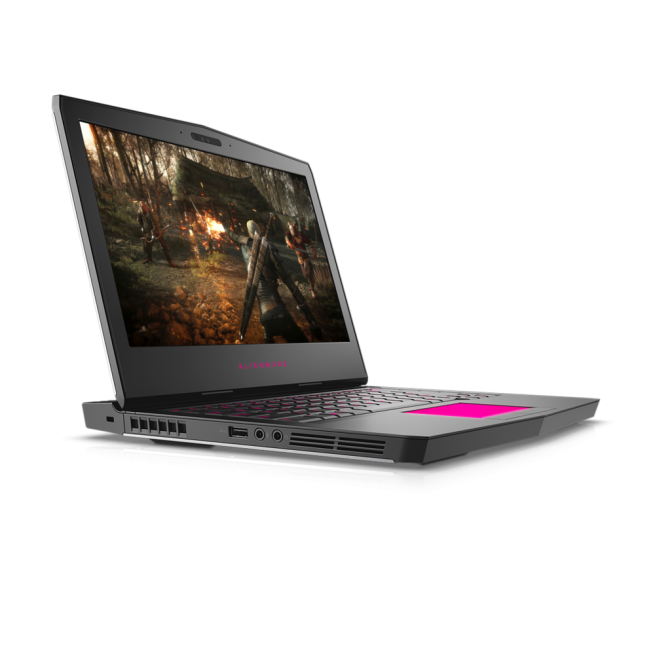The machine from Alienware is a compact, a small thing with a large backside and a screen that differs both positively and negatively. Despite the relatively modest framework, it feels heavy, and we were actually a little surprised that it only weighed 2.5 kilos. Our test model was at 13 inches, so there was not much room for the keys, which had to be tightly placed together. It is back-lit, as it should be on a gaming PC, but you also get light from the logo and the track-pad. The colours can be adjusted with the accompanying software, but doesn’t really matter, as you can only change it in pre-defined sections, and not behind each individual key. Both the bottom and the backside are covered in grooves for ventilation. The machine gets very hot when you push it, and the fans can be heard clearly. When you’re not playing on the computer however, it is completely silent.
OLED
Where the Alienware really stands out from the other machines is its built-in display. It is both terribly ugly and gorgeous at the same time. Who on Earth decided that there should be so much unused space around the screen itself? That’s dumb. Having said that, the OLED panel is amazingly good, providing a colour intensity and a contrast level that the others can only yearn for. Unfortunately, this connects with a polished surface, which in the right lighting makes the screen impossible to work with. This is a shame. As a fun and trivial feature, it is touch sensitive. The built-in speakers can play almost twice as loud as those in the model from Asus, and are surprisingly good, although you shouldn’t expect hi-fi quality.
Benchmark
The resolution on display is 2560 x 1440 pixels, which is a lot for such a small screen. Used with Nvidia GTX 1060, this unfortunately creates a bottleneck, as the machine has a hard time maintaining a stable frame rate above 30 fps in newer and more demanding games. The frame rate even drops at some sequences down in the 20’s, unless we lower the graphic settings a little. As a result, we decreased the resolution to 1080p, as this was the primary reason for the poor performance. The computer immediately performed better after this. It was now somewhat possible to maintain a stable 60 fps in both Rise of the Tomb Raider and Dishonoured 2 at the second highest settings. As an extra advantage, the battery life is among the best.
Conclusion
Alienware has for many years been known for solid gaming computers in the expensive range, and has unfortunately also been reserved for the US market. This is no longer the case, and we really should be happy about that. This machine may not have the most powerful graphics card, but still manages quite well, and has an incredibly sleek and crisp OLED display. The battery was clearly one of the better performing, and can keep your computer running for a long time. If you want a computer that is still portable and can be used for things other than gaming, and if you can live with the shiny screen and the slightly silly design, Alienware is a good buy.

We think
The screen is amazingly nice and sharp. Despite the size, the performance is quite good, and the battery is one of the better ones. The screen is way too shiny, and therefore useless in sunshine. Not everyone will like the huge back portion.
21590 €
Specifications
Operating system: Windows 10 Home, 64-bit
Processor: 2,8 GHz Intel Core i7-7700HQ
(quad-core, 8 threads)
Screen: 13.3” QHD (2560 x 1440) OLED
Memory: 16GB
Graphics: Nvidia GeForce GTX 1060 m.
6 GB RAM
Hard drive: 256 GB SSD
Dimensions: 33.3 x 2.2 x 26.9 cm (WxHxD)
Weight: 2.6 kg.
HD-webcam with IR, Killer 1435 802.11ac 2×2 with Wifi and Bluetooth 4.1 Gigabit Ethernet,
2 x USB 3.0 (A), 1 x USB 3.0 (C),
1 x Thunderbolt ™ 3 port, Mini DisplayPort,
HDMI, LAN, headphone output, Alienware
Graphics Amplifier port, Microphone input
Price: –
www.dell.com
Benchmark
Geekbench 3: 13,437 (Multi-core), 3,512
(single-core)
Basemark 3.0: 523.52
3DMark 15: 9,653
3DMark Time Spy: 3,643
Cinebench R15: 86.62 fps / 719 cb
HDTach: 990.0 MB/S
Futuremark Peacekeeper: 2:50 hours


